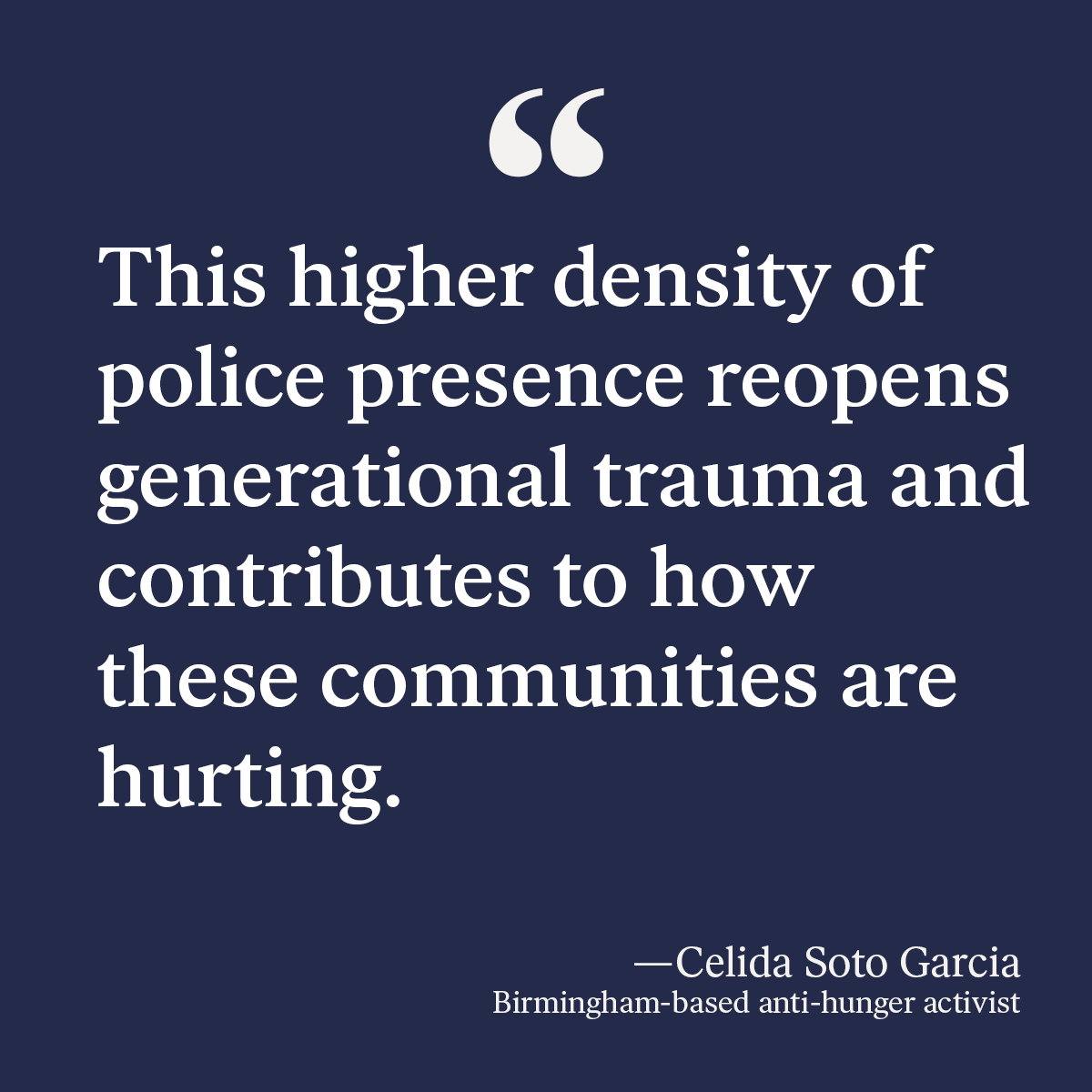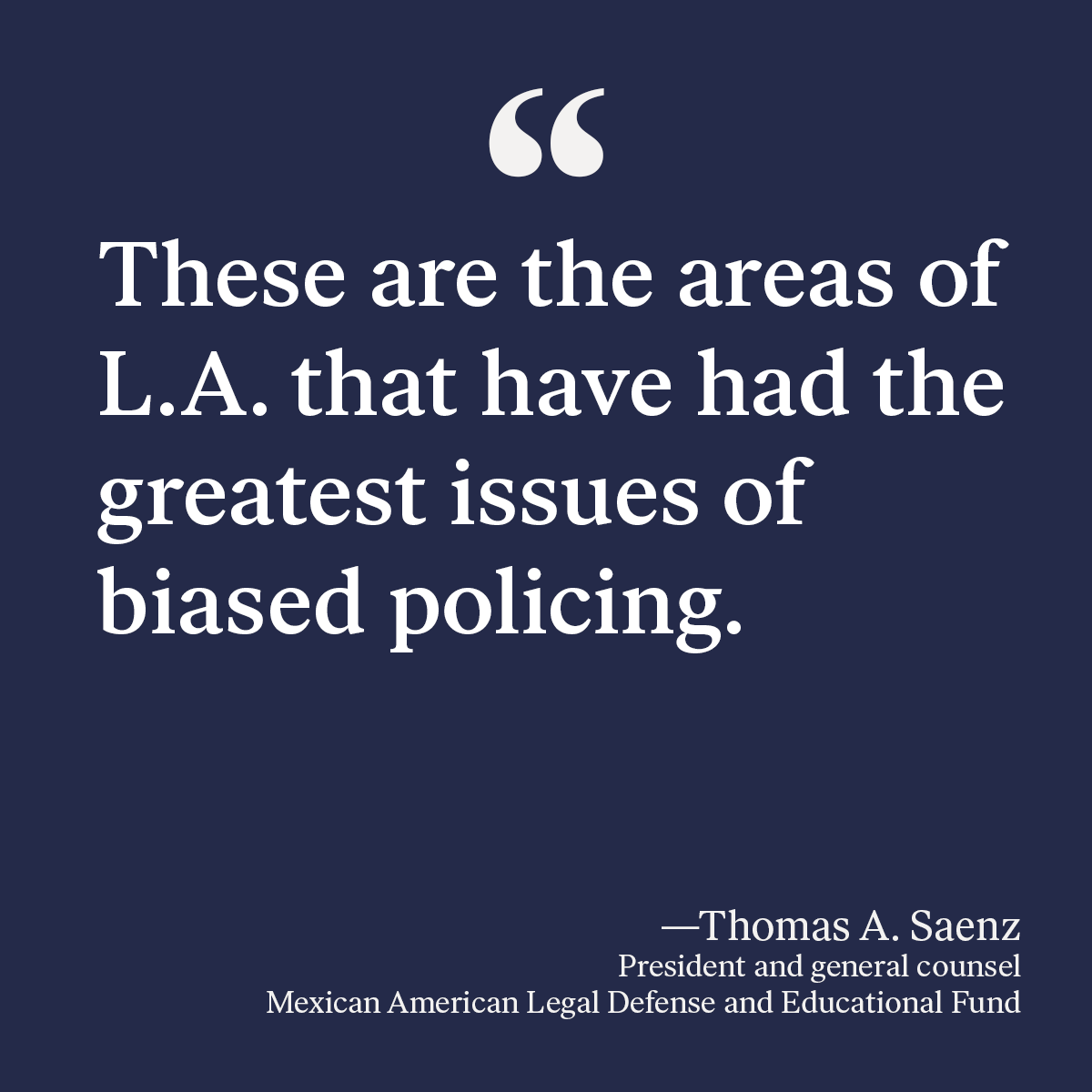
A decade ago, a group of UCLA professors developed software that used data to predict where crime would happen, promising police could thwart it.
PredPol, as they called it, was supposed to be race neutral. We and @Gizmodo found its predictions are not. themarkup.org/prediction-bia…
PredPol, as they called it, was supposed to be race neutral. We and @Gizmodo found its predictions are not. themarkup.org/prediction-bia…
We found more than seven million predictions PredPol sent to dozens of police departments and left unsecured on the web.
We analyzed predictions for 38 U.S. policing agencies between 2018 and 2021—and discovered a pattern.
We analyzed predictions for 38 U.S. policing agencies between 2018 and 2021—and discovered a pattern.
In Portage, Mich., the neighborhoods most targeted by the software have nine times the proportion of Black residents as the city average. 

In Birmingham, Ala., the least-targeted areas are overwhelmingly White in a city that’s half Black.
The most-targeted areas have at least twice the proportion of Latino residents as the city as a whole.
The most-targeted areas have at least twice the proportion of Latino residents as the city as a whole.

In Los Angeles, the most targeted areas are disproportionately low-income and more Latino than the city as a whole.
Even when predictions seemed to target majority White neighborhoods, they clustered on blocks that are nearly 100% Latino.
Even when predictions seemed to target majority White neighborhoods, they clustered on blocks that are nearly 100% Latino.

The fewer White residents in an area—and the more Black and Latino residents there—the more likely the neighborhood would be the subject of a PredPol crime prediction, our investigation found.
We found similar patterns regarding wealth and poverty: Middle-class and wealthier neighborhoods were targeted the least.
Neighborhoods where more households qualify for the national free and reduced school lunch program were targeted the most.
Neighborhoods where more households qualify for the national free and reduced school lunch program were targeted the most.

These communities weren’t just targeted more—in some cases they were targeted relentlessly.
Crimes were predicted every day, sometimes multiple times a day, sometimes in multiple locations in the same neighborhood.
Crimes were predicted every day, sometimes multiple times a day, sometimes in multiple locations in the same neighborhood.
PredPol, which recently changed its name to @Geolitica_PS, said our analysis is flawed because it’s based on reports “found on the internet” but also confirmed that they “appear to be legitimate.”
When we asked the company’s CEO if he was concerned about the disparities between those communities that are targeted and those that are avoided, he said that because the software uses “crime data as reported to the police by victims themselves,” its predictions are unbiased.
But research by two of PredPol’s founders in 2018 concluded that the software would target Black and Latino neighborhoods in Indianapolis 400% more than White neighborhoods.
PredPol didn’t change the algorithm.
PredPol didn’t change the algorithm.

It’s unclear how police respond to crime predictions. Criminal defense attorneys say they aren’t told when predictions result in arrests—and say that makes it harder to provide a good defense. 

As always, we show our work. @SuryaMattu and @DMehro spent months analyzing the data. themarkup.org/show-your-work…
@ASankin and @AnnieGilbertson led the reporting with support from @amstudiojosh, @DanielLempres, and @DellCam. Read the full investigation today. themarkup.org/prediction-bia…
• • •
Missing some Tweet in this thread? You can try to
force a refresh



